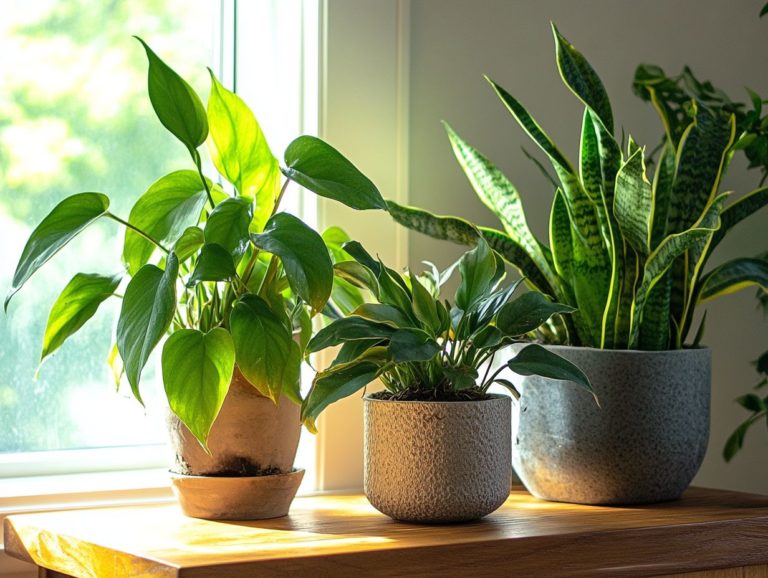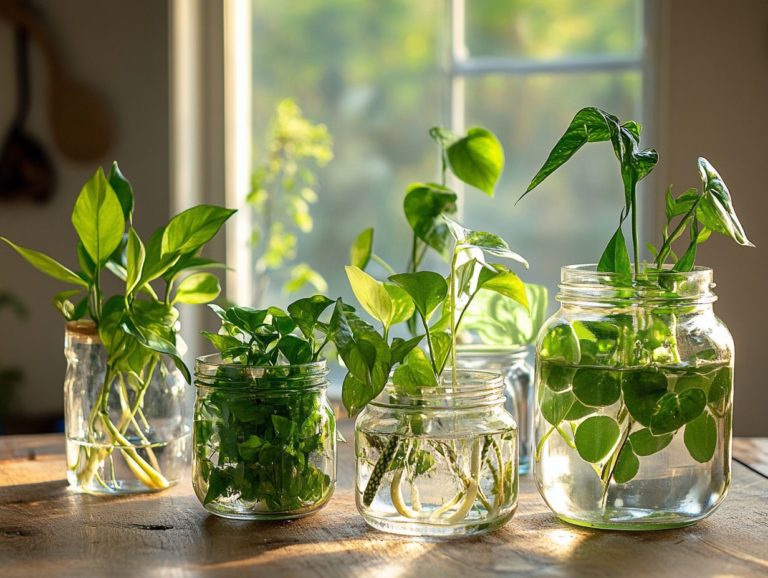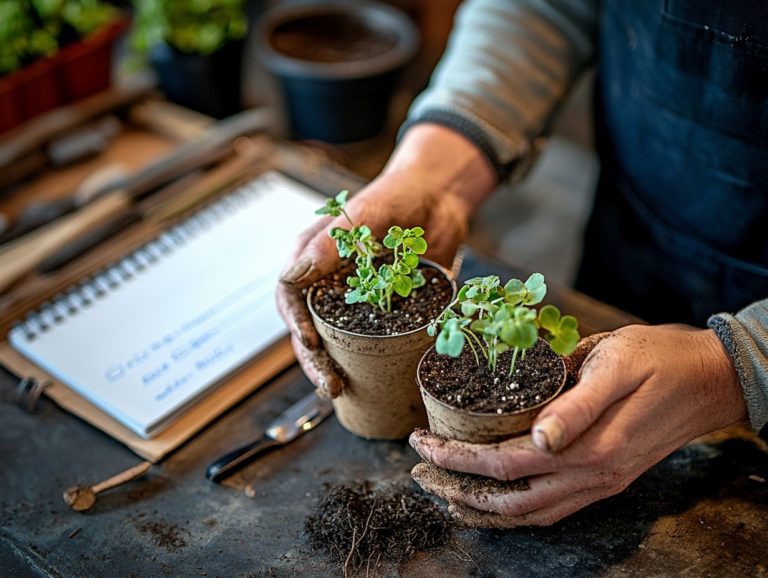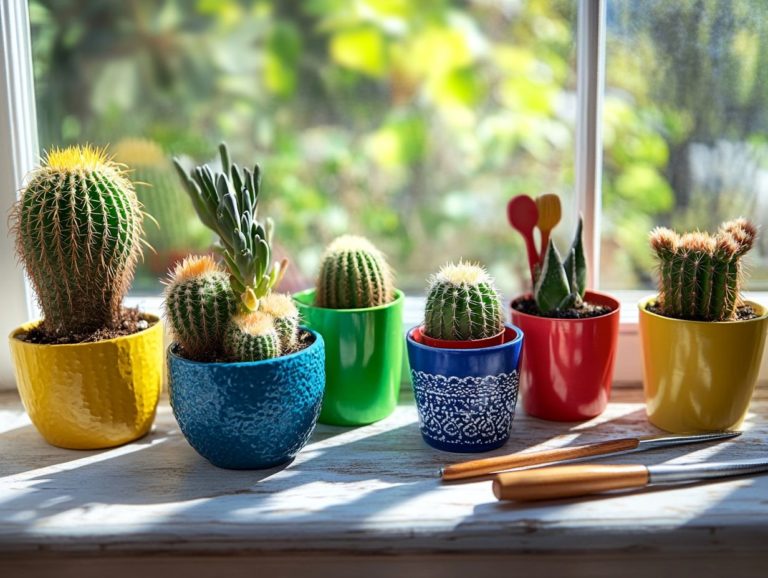How to Propagate Peace Lilies
Peace lilies are more than just eye-catching houseplants. They offer an exciting opportunity to propagate, whether you want to enhance your own green oasis or share the beauty with friends!
In this guide, you’ll uncover various propagation methods to propagate peace lilies. This includes dividing peace lilies, rooting stem cuttings, and even planting seeds.
You’ll find a comprehensive list of essential materials, along with step-by-step instructions and handy tips to troubleshoot common plant care issues.
Whether you re a seasoned plant enthusiast or just beginning your journey, you ll have everything you need to successfully grow peace lilies. Dive in and discover how to effortlessly expand your collection!
Contents
Key Takeaways:
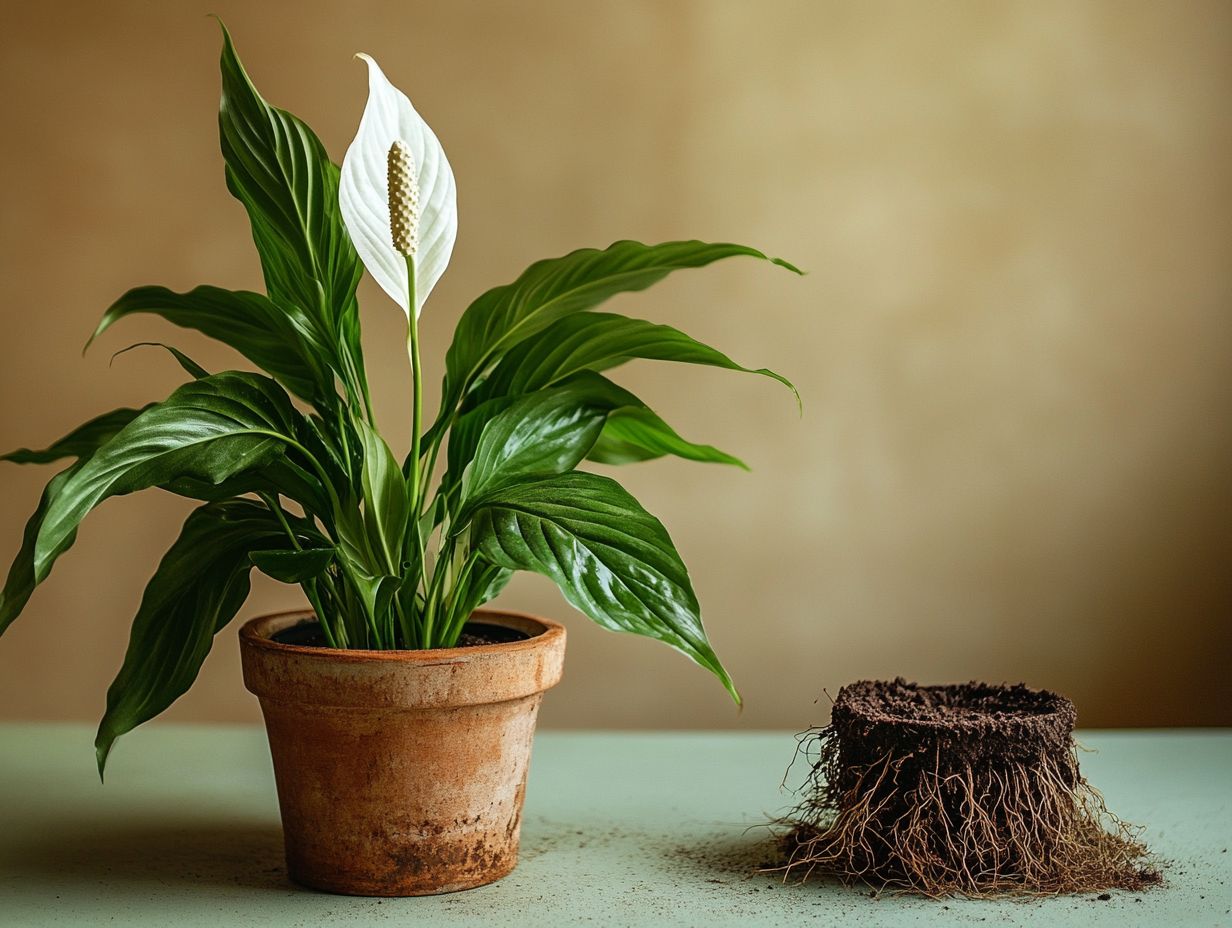
- Propagating peace lilies is beneficial as it creates new healthy plants and helps maintain the health of existing ones.
- There are three main methods for propagating peace lilies: dividing the plant, rooting stem cuttings, and planting seeds.
- To successfully propagate peace lilies, you will need essential supplies such as a sharp knife, well-draining soil, and containers. Common issues can be overcome with proper troubleshooting techniques.
Basic Information and Characteristics
The peace lily, scientifically known as Spathiphyllum, is a remarkable indoor plant. It not only purifies the air but also infuses any space with a sense of tranquility.
With its lush green leaves and elegant white blooms, it elevates your home s aesthetic while positively impacting your home garden. Native to tropical regions, this plant is surprisingly easy to care for and adapts well to various lighting conditions, making it a top choice for both plant enthusiasts and novice gardeners.
This resilient beauty flourishes in indirect sunlight, making it perfect for those cozy, low-light corners! It thrives even in low to medium light settings.
Known for its impressive air-purifying qualities, the peace lily effectively filters out common toxins like formaldehyde and benzene. This contributes to a healthier living space!
To keep your peace lily happy, ensure the soil remains consistently moist just avoid the temptation to overwater. A bit of misting will help maintain humidity levels, giving your plant that lush, vibrant look.
Don t forget to treat it to an occasional feeding with a balanced fertilizer during the growing season. This enhances its beauty and encourages those stunning blooms, making it a captivating centerpiece in your indoor oasis!
Why Propagate Peace Lilies?
Propagating peace lilies comes with numerous advantages that elevate your gardening experience and boost plant health. By mastering the art of propagation, you can transform existing peace lilies into new, thriving specimens, ensuring a continuous supply of these air-purifying wonders for your indoor spaces!
Effective propagation techniques enhance the longevity and vitality of the parent plant. This seamlessly fits into contemporary gardening trends that prioritize sustainable and responsible plant care.
Benefits of Propagation
The benefits of propagating peace lilies go far beyond simply expanding your plant collection. They include enhanced plant health and the chance to experiment with various plant varieties.
By employing effective propagation methods, you can ensure that your peace lilies remain robust and vibrant, adorned with lush foliage and stunning blooms. This not only enriches your gardening experience but also beautifies your indoor spaces with a burst of greenery!
Cultivating these plants significantly improves indoor air quality, making them an exceptional choice for your home environment. Research indicates that peace lilies can filter out common toxins, contributing to a healthier living atmosphere.
For those who relish the challenge and joy of nurturing plants, successfully propagating peace lilies offers a profound sense of accomplishment. As you care for your thriving plants, you often discover a deeper connection with nature. This transforms gardening from a mere hobby into a fulfilling lifestyle choice that nurtures relaxation and mindfulness!
Methods of Propagation
You have several effective methods at your disposal for propagating peace lilies! This allows you to select the technique that aligns with your preferences and needs.
By understanding the various propagation methods whether it’s dividing peace lilies, rooting stem cuttings, or even planting seeds you can successfully multiply your indoor plants while maintaining proper care.
Each method offers unique advantages and challenges. Familiarizing yourself with these techniques is crucial to achieving the best results.
Dividing the Plant
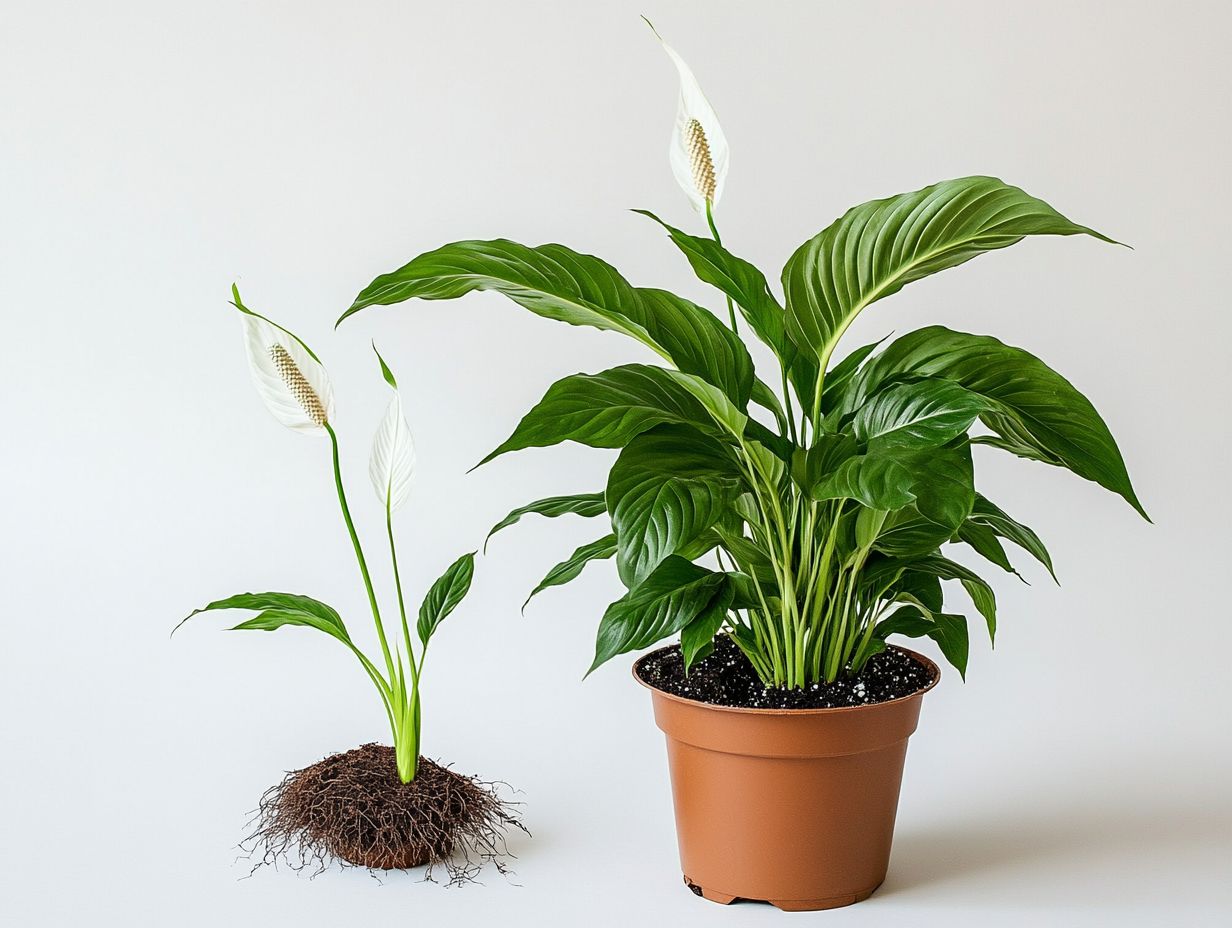
Dividing the peace lily stands out as one of the most effective methods for propagation. This technique allows you to rejuvenate your plants while creating new ones. It involves separating the plant into smaller sections, each with its own roots and leaves. This ensures that the new plants are both healthy and robust.
When executed properly, this method can significantly enhance plant growth and health while promoting the best gardening techniques.
To get started, choose the right moment for division early spring is ideal when the plant is actively growing. Gather your essential tools: a clean, sharp knife, pots for the new divisions, and well-draining potting soil, preferably a mix designed for tropical plants.
Carefully remove the peace lily from its pot and gently untangle the roots. Use the knife to slice the root ball into manageable sections.
Once you’ve repotted the divisions, give them a thorough watering, but steer clear of soggy soil, as roots need air to thrive. Place them in indirect light and maintain humidity for optimal recovery. Regular care, including monitoring moisture levels and fertilizing during the growing season, will help ensure that both your original plant and the new ones flourish beautifully.
Rooting Stem Cuttings
Rooting stem cuttings from a peace lily is a favored method of propagation! It allows you to cultivate new plants from healthy leaves. This technique involves taking cuttings from the parent plant and fostering their growth into independent plants. Mastering this approach can significantly enhance the health of your plant collection.
Start by selecting healthy, vibrant stems that show no signs of disease or damage. Aim for cuttings that are around four to six inches long, each adorned with a few leaves to encourage vigorous growth.
Creating an environment that mimics the plant s natural habitat is essential. You ll want to maintain humidity and warmth, as these elements are crucial for promoting root development. Using clean, sharp tools is imperative to prevent infection and facilitate a smooth healing process.
Much like caring for a newborn, consistent monitoring of moisture levels and light conditions is vital for sustaining the health of these delicate cuttings. This sets the stage for a flourishing peace lily collection!
Planting Seeds
Planting seeds might not be the most common approach, but it offers a uniquely rewarding way to propagate peace lilies! You can cultivate plants with distinct characteristics. While this method demands patience and specific conditions, the payoff is worth it: successful germination can lead to beautiful new blooms that elevate your indoor spaces.
Understanding seasonal care and employing the right techniques can greatly enhance your chances of successful seed planting.
Grasping the nuances of seed selection is essential. Opt for fresh, mature seeds for the best results. Create warm, humid conditions with indirect light for ideal germination this can often be achieved by placing your seeds in a seedling tray filled with a well-draining potting mix. Once those seedlings sprout, maintain consistent moisture and provide gentle light to encourage robust growth.
Unlike other propagation methods like division or cuttings, seed planting offers a wonderful opportunity for genetic diversity. Although it may take longer for seedlings to mature, your dedication and attention to detail will surely pay off as you nurture these young plants into thriving beauties!
Ready to give these methods a try? Start your journey of propagation today and share your experiences with fellow plant lovers!
Materials and Tools Needed
Gather your supplies and set the stage for vibrant peace lilies! To propagate peace lilies successfully, you ll need essential tools and materials for optimal growth. High-quality potting soil, well-draining containers, and suitable plant tools are crucial for a smooth propagation process and the overall health of your peace lilies.
These materials foster successful growth and elevate your gardening experience.
Essential Supplies for Propagation
Having the right supplies is vital for your peace lilies to thrive after separation or cutting. Key items include high-quality potting soil, which promotes strong root health. Sharp plant tools, like scissors or knives, ensure clean cuts.
Consider adding light materials that help the soil drain better, like perlite or coconut coir, to enhance soil drainage and aeration.
Opt for sterilized containers to minimize the risk of diseases, creating a safe haven for your new plants. A moisture meter is another valuable tool, allowing you to water precisely and avoid over or under-watering.
Using top-notch supplies is essential; inferior materials can lead to poor root development and stunted growth. Quality tools ensure a seamless propagation process, while premium soil supports the overall health of your peace lilies. Additionally, for those interested in expanding their indoor plant collection, learning how to propagate sansevieria plants can make a significant difference as they adapt to their new environments.
Step-by-Step Guide to Propagating Peace Lilies
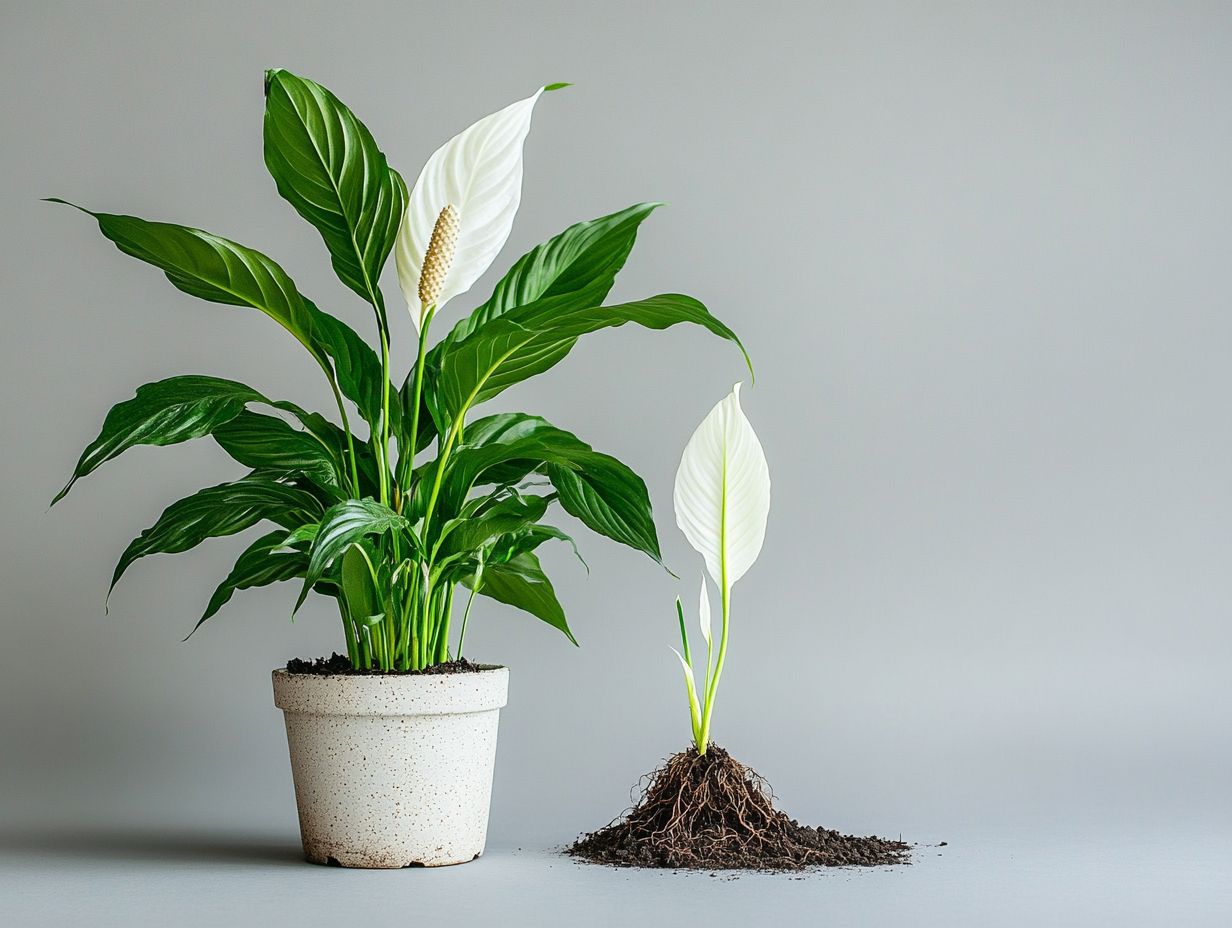
Follow this step-by-step guide to unlock your gardening potential! Whether you re a novice or a seasoned gardener, detailed instructions for each method be it dividing the plant, rooting stem cuttings, or planting seeds will elevate your gardening game and promote robust plant growth.
With care tips at every stage, you ll find that propagating peace lilies can be both rewarding and enjoyable.
Detailed Instructions for Each Method
Clear guidance on each propagation method allows you to tackle the process confidently. Whether you re dividing the plant, rooting stem cuttings, or planting seeds, following these instructions is vital for achieving thriving peace lilies that beautify your home.
Each technique suits different experience levels and conditions, so assess your specific needs before diving in. If you’re considering expanding your collection, learning how to propagate spider plants can be a great starting point. When you divide a mature peace lily, ensure each division has enough roots and leaves.
Rooting stem cuttings works best in warm, humid conditions to encourage growth, while planting seeds requires attention to light and consistent moisture. Adjust soil types or light exposure based on your plants responses. By following these best practices, you create a nurturing environment for your peace lilies to flourish.
Troubleshooting Common Issues
Troubleshooting common issues during peace lily propagation is crucial for maintaining plant health and ensuring successful growth. Common challenges include fungal diseases, inadequate humidity levels, and watering issues that can impede the success of your tropical plants.
Recognize these problems and take action to cultivate a flourishing indoor gardening environment that truly thrives.
Tips for Overcoming Challenges
Effective strategies can boost your success in peace lily propagation. Common issues like improper watering, low humidity, and pests need attention to keep your plants healthy.
Start by establishing a consistent watering routine. Overwatering can cause root rot, while under-watering leads to wilting. Allow the top inch of soil to dry before watering again.
Peace lilies thrive in high humidity. Use a pebble tray with water or a humidifier to maintain moisture levels, especially in dry climates.
Check your plants regularly for pests like spider mites or aphids. Remove any affected leaves immediately to stop infestations from spreading.
These simple steps will create a nurturing environment, helping your plants flourish.
Frequently Asked Questions
How do I propagate peace lilies?
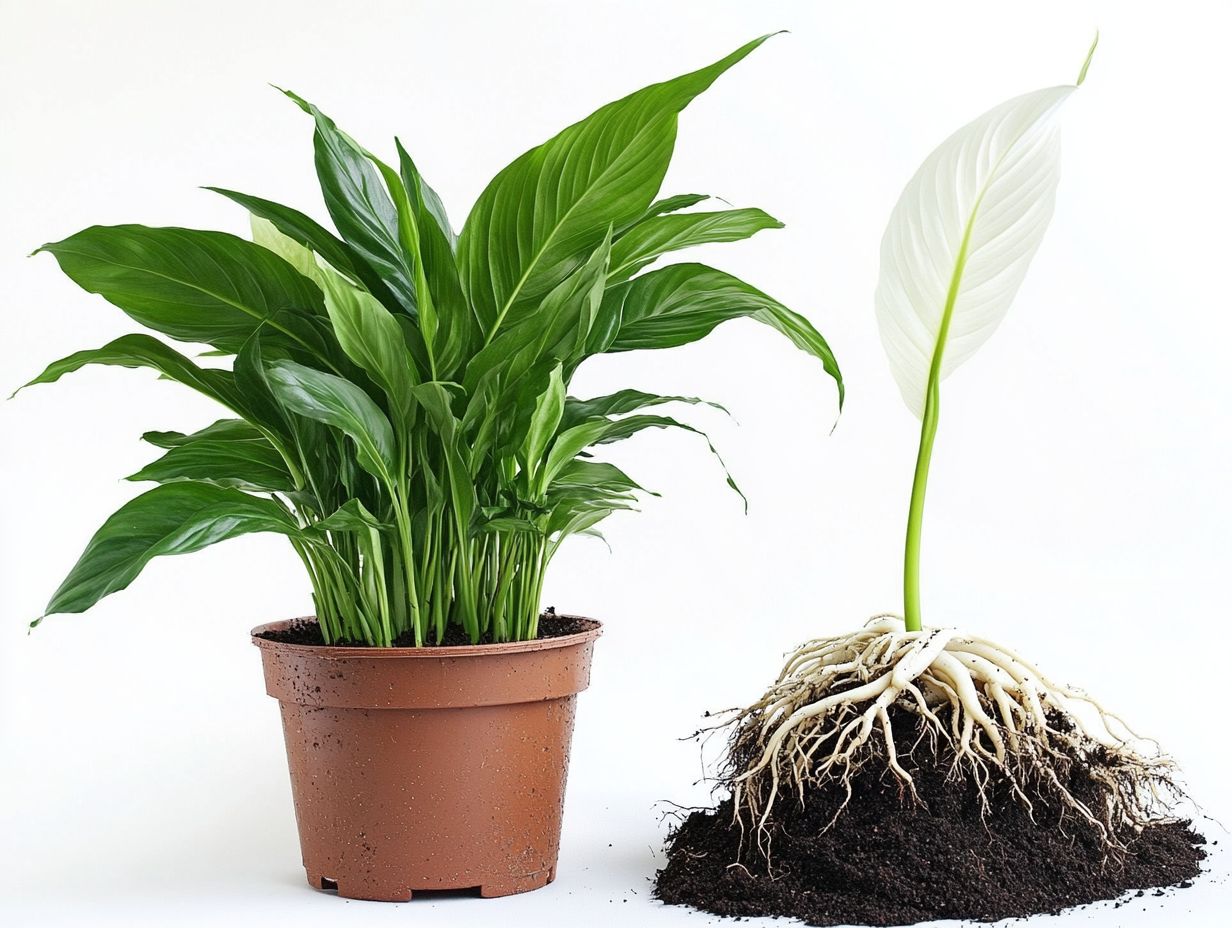
To propagate peace lilies, you can divide the plant or use stem cuttings. Division means separating the plant into sections with roots, while stem cuttings involve rooting a stem piece in water or soil.
When is the best time to propagate peace lilies?
The best time is spring or summer when the plant is growing actively. This timing helps the new plant settle in before winter dormancy.
Can I propagate peace lilies in water?
Yes, place a stem cutting in a container of water. Change the water every few days and keep it in bright, indirect light until roots appear. Once rooted, transfer it to soil.
How long does it take for peace lilies to propagate?
Propagation time varies by method and conditions. It usually takes 4-6 weeks for a stem cutting to root, while division may yield quicker growth.
What should I do after propagating peace lilies?
After propagation, provide the right conditions. Keep the soil moist but not soggy, give it bright, indirect light, and avoid extreme temperatures. Hold off on fertilizing until the new plant is established.
Can I propagate peace lilies from a leaf?
No, you need a stem section with leaves to propagate. New growth comes from nodes on the stem, not from leaves alone.



